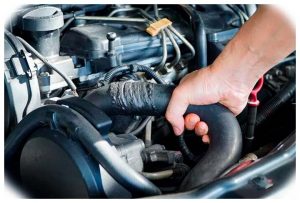Coolant loss is a common problem for many vehicles. Coolant, also known as antifreeze, is used in your vehicle’s cooling system to keep it from overheating. If your car has too much or too little coolant, it can cause problems with the engine and other components. In order to prevent these issues, it’s important to know how much coolant loss is normal in a vehicle and how to identify coolant-related issues.
Causes of Excessive Coolant Loss
Several factors can cause excessive coolant loss. The most common causes of excessive coolant loss are leaks in the system and overheating of the engine.

Overheating: Overheating of the engine is another common cause of excessive coolant loss. This occurs when the engine is subjected to too much stress and heat, which causes it to work harder than it should and increases the temperature of the coolant fluid beyond its normal range. This can cause the fluid to evaporate or boil off, resulting in a noticeable loss of coolant level in your vehicle.
Identifying the Causes of Coolant Loss
In order to identify the source of your coolant loss, there are a few things you can do:
Check for Leaks: Checking for leaks with a visual inspection is one way to determine if there is an issue with your car’s cooling system. Look for wet spots on your driveway or beneath your car that could indicate a possible leak within your cooling system and address them before it gets worse.
Monitor Temperature: It’s important to monitor your engine’s temperature with an infrared thermometer so that you can quickly identify any overheating issues before they become too severe. If you notice that your engine temperature is higher than usual, then this could indicate a problem with your cooling system and should be addressed immediately.
Tips to Prevent Excessive Cooling Loss

Regular Flush and Fill: You must have your car’s cooling system flushed and refilled at least once every two years or 30,000 miles. This will help keep your vehicle’s cooling system running efficiently and reduce the chances of coolant loss due to leaks or other issues.
Oil and Filter Check: Regularly changing your engine oil and filter is another way to reduce the risk of excessive coolant loss. Dirty engine oil can clog up vital components in the cooling system which can cause it to overheat, resulting in increased coolant evaporation or boiling off.
Look for Wear & Tear: Inspecting your vehicle for any signs of wear and tear is also important in preventing excessive coolant loss. Look for cracked hoses or loose clamps that could indicate an issue with the cooling system that needs to be addressed before it gets worse.
Conclusion
It’s important to know how much coolant loss is normal in your vehicle and how to identify coolant-related issues. Excessive coolant loss can be caused by leaks or overheating, so it’s important to regularly inspect your car for these problems and take steps to prevent them. By following the tips above, you can keep your car running smoothly and reduce the chances of any excessive coolant loss occurring.


Add Comment